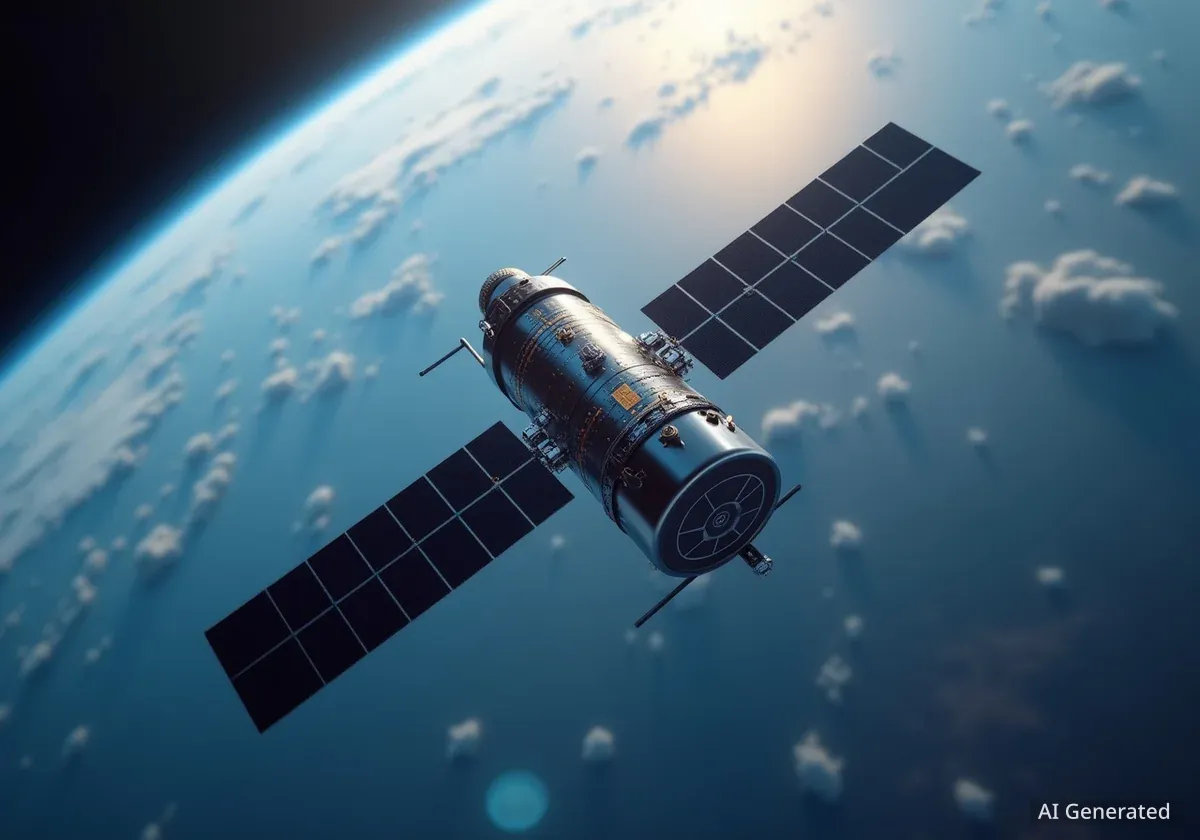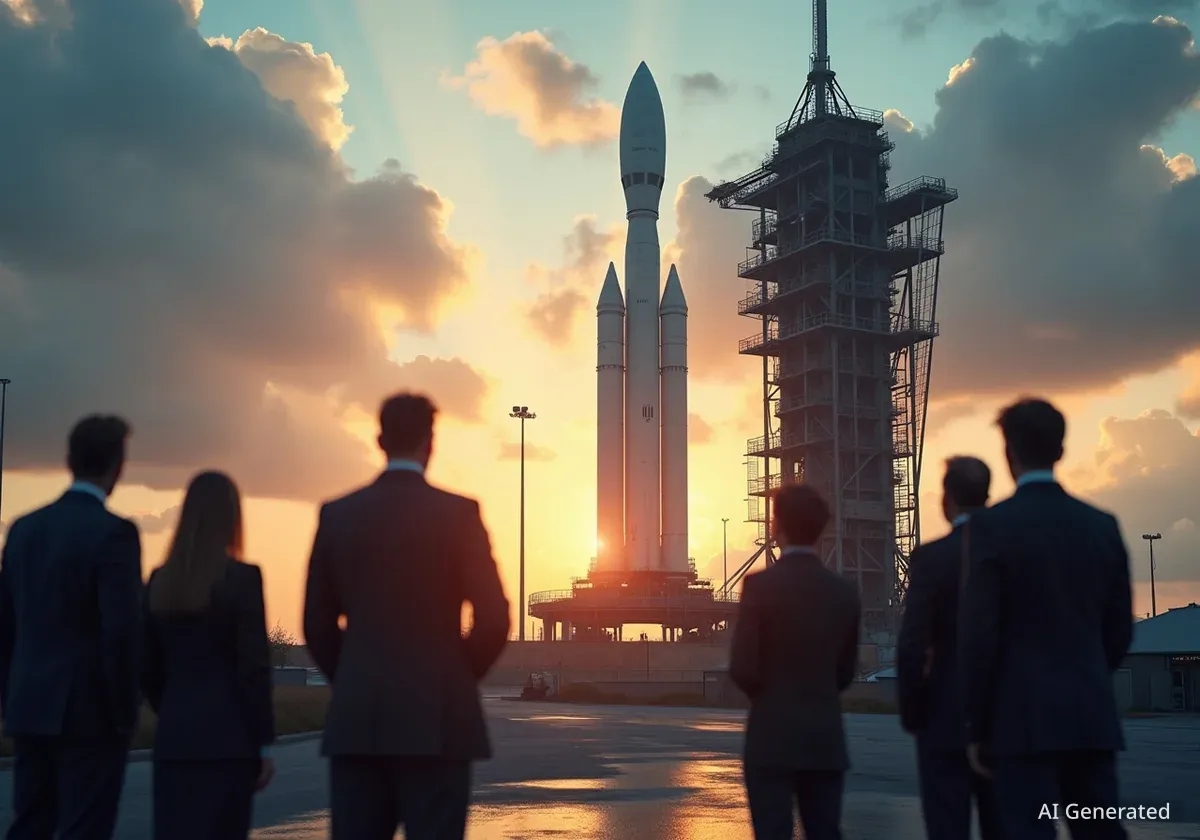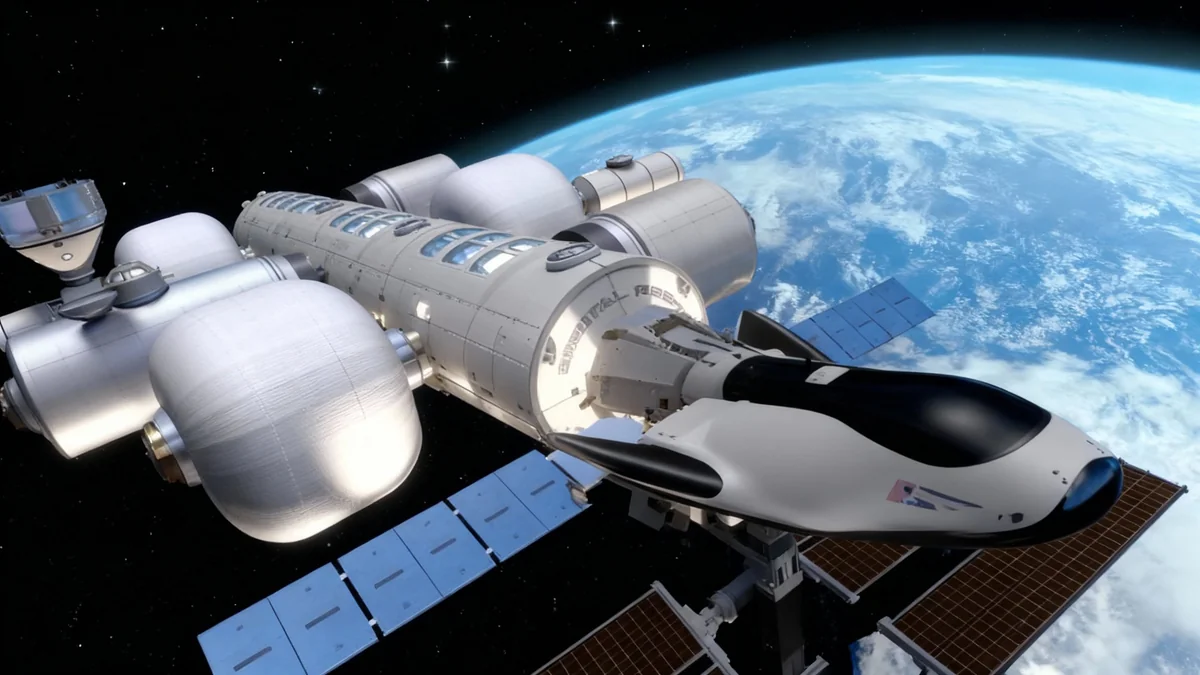The global space economy has expanded significantly, with its value exceeding $570 billion in 2023. Projections indicate it could reach one trillion dollars within the next decade, according to The Space Foundation's 2024 report. This rapid growth is fueled by two parallel forces: a dynamic commercial sector led by private companies and a renewed strategic focus on space for national security and defense.
Across the globe, and particularly in Europe, governments and private enterprises are navigating this new era. The rise of commercial innovation is creating new markets for satellite services, while increasing geopolitical tensions are transforming space into a critical domain for military operations, prompting new strategies and investments.
Key Takeaways
- The global space economy was valued at over $570 billion in 2023, with forecasts suggesting it will reach $1 trillion in the next ten years.
- Commercial activities, especially satellite services and infrastructure, are major contributors to this economic expansion, a trend known as the 'New Space' movement.
- Europe is adapting its space strategy, balancing major public programs like Copernicus and Galileo with support for a growing commercial startup ecosystem.
- Space is increasingly viewed as a critical and contested domain for defense, leading to record-high military spending and new strategies from both the EU and NATO.
- Major powers like the United States, China, and Russia are heavily investing in military space capabilities, creating a complex geopolitical landscape.
The Commercialization of Earth's Orbit
The recent surge in the space economy is largely attributed to the private sector. A movement often called 'New Space' has seen startups and established technology companies enter a field once dominated by national governments. These companies are introducing innovations that lower costs and create new services.
Satellite services and the infrastructure required to support them form the backbone of this commercial growth. From global internet constellations to high-resolution Earth imaging, private investment is unlocking new applications for space-based technology that affect industries on the ground.
Europe's Evolving Civil Space Sector
Europe's civil space industry is undergoing a significant transformation. Historically reliant on public institutions such as the European Space Agency (ESA) and various national agencies, the region is now actively cultivating a more dynamic commercial market.
The European Union and ESA are promoting this shift through programs like CASSINI, which offers funding and business development support to space-focused startups. The goal is to build a more competitive and agile ecosystem that can compete on the global stage.
Europe's Flagship Space Programs
Two major programs remain central to Europe's space strategy: Copernicus for Earth observation and Galileo for satellite navigation. Managed by the European Union Agency for the Space Programme (EUSPA), these systems provide essential data that supports a wide range of downstream applications developed by commercial companies, from precision agriculture to logistics.
To further bolster its strategic independence, the EU is investing in a new secure satellite communication system known as IRIS² (Infrastructure for Resilience, Interconnectivity and Security by Satellite). This initiative aims to provide reliable and secure connectivity for government and commercial users.
Addressing Regulatory Challenges
One of the primary obstacles for European space companies has been the fragmented regulatory environment. Different national laws have created complexity and increased costs for businesses operating across the continent.
In response, the European Commission has proposed the EU Space Act. This legislation aims to create a unified, harmonized framework for space activities. The objective is to establish a single market for space services, making it easier for companies to innovate and operate across member states.
Industry leaders are also advocating for a larger and more predictable budget in the EU's next long-term financial plan to ensure the continuity of these critical programs and maintain Europe's competitive edge.
Space as a Critical Defense Domain
The perception of space has shifted dramatically from a peaceful frontier for scientific discovery to a critical and potentially contested area for military operations. This change is a primary driver of space policy for nations around the world.
Modern militaries are deeply dependent on space-based assets for communication, navigation, intelligence, and surveillance. This reliance makes satellites and other space infrastructure valuable targets, prompting a reassessment of defense strategies.
According to NATO, space is now officially recognized as an operational domain, alongside land, air, sea, and cyberspace. This designation reflects its importance to collective security and defense planning.
Europe's Strategic Response
In light of growing geopolitical tensions and the increasing weaponization of space, both the European Union and NATO have updated their security postures. The EU Space Strategy for Security and Defence was introduced to protect European space systems and better understand potential threats.
This strategy includes pilot programs to enhance space domain awareness and develop new Earth observation services specifically for defense needs. Coinciding with this strategic shift, European defense spending has reached record levels, with a notable increase in funds allocated to research and development.
NATO has also adapted its approach. The alliance is working to improve cooperation and interoperability among its members to protect their space assets. The establishment of the NATO Space Centre at Ramstein Air Base in Germany is a clear signal of this commitment to collective security in the space domain.
Global Competition and the New Arms Race
The United States, China, and Russia continue to be the dominant forces in the military space sector. These nations are investing heavily in advanced counter-space technologies, including anti-satellite (ASAT) weapons and signal jamming systems.
"The creation of the U.S. Space Force and significant budget increases for space defense programs highlight the USA's focus on maintaining its technological edge and deterring adversaries in this critical domain."
Meanwhile, China and Russia are rapidly developing their own military space capabilities. This dynamic has led to what some analysts describe as a new type of arms race in orbit, focused on disrupting or disabling an adversary's space-based systems.
Emerging Challenges and Future Outlook
The dual trends of commercialization and militarization are expected to accelerate. In the coming years, the space industry will likely focus on addressing key vulnerabilities, such as the growing threat of space debris and the need for enhanced cybersecurity for satellite networks.
Several complex legal questions are also emerging, which will require international cooperation to resolve. These include:
- Liability for AI: Who is responsible if an autonomous AI system in orbit makes a mistake?
- Space Debris: How should liability be determined when space debris causes damage to active satellites?
- Intellectual Property: How can intellectual property rights be protected and enforced for inventions created or used in space?
As the space economy continues its trajectory toward a trillion-dollar valuation, the interplay between commercial opportunity and geopolitical competition will define the next chapter of human activity beyond Earth.





